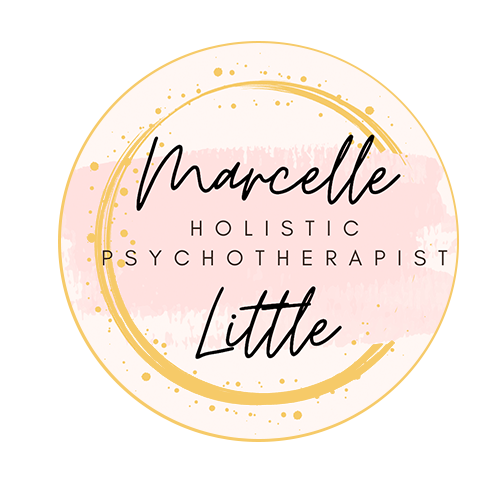The Role of Mindfulness in Emotional Regulation for the Bay Area's Sensitive Souls
As a psychotherapist serving clients in California and Florida—including many Highly Sensitive Persons (HSPs) and empaths in the Bay Area—I specialize in individual therapy for anxiety and depression, relationship therapy, therapy for codependency and people-pleasing, life transitions, mindfulness and somatic therapy, women’s issues, and support for American expats living abroad. In my work, I often see how HSPs and empaths experience emotions with great intensity. This sensitivity is both a gift and a challenge. Mindfulness, paired with evidence-based approaches like Dialectical Behavior Therapy (DBT), can provide powerful tools to help regulate emotions and create more balance in daily life.
Understanding Emotional Regulation
Emotional regulation is the ability to notice, understand, and respond to emotions without being overwhelmed by them. It isn’t about suppressing feelings or pretending to be calm—it’s about finding balance, cultivating resilience, and choosing responses that align with your values.
For HSPs and empaths, emotions often feel amplified—like tidal waves that can knock you off center. Having reliable practices for grounding and regulation can transform how you navigate these moments.
Research highlights the deep connection between emotional regulation and mental health. When we strengthen our capacity to regulate, we reduce symptoms of anxiety and depression and increase self-confidence in relationships and work (Gross, 2015).
The HSP/Empath Experience
Highly Sensitive Persons (as identified by Dr. Elaine Aron) and empaths tend to notice subtleties in their environment that others may miss. They may deeply absorb other people’s moods, feel overstimulated in crowds, or carry the emotional “weight of the world.” This sensitivity can fuel creativity, empathy, and intuition—but it can also lead to overwhelm, people-pleasing, and burnout.
In the high-energy, fast-moving culture of the Bay Area, HSPs and empaths often struggle to find balance. This is where mindfulness provides a vital anchor—helping you discern what belongs to you and what doesn’t, while regulating the intensity of what you feel.
What Is Mindfulness?
Mindfulness is the practice of paying attention to the present moment with curiosity and without judgment (Kabat-Zinn, 1990). It allows us to slow down, notice our inner experience, and choose how to respond.
Research shows that mindfulness meditation can change the brain’s structure, increasing gray matter density in regions tied to emotional regulation and decreasing activity in the amygdala, the brain’s alarm center (Hölzel et al., 2011).
For HSPs and empaths, mindfulness creates just enough space between an emotional trigger and a reaction, so they can respond rather than react.
Practical Tools for Emotional Regulation
Here are a few mindfulness-based and DBT-informed practices that many HSPs and empaths find helpful:
Urge Surfing (DBT): When a strong urge arises—whether it’s to lash out, withdraw, or soothe in unhelpful ways—imagine the urge like a wave. Instead of fighting it or giving in, ride it. All urges rise, crest, and fall.
Mindful Breathing: Place a hand on your chest and belly, and take slow breaths, noticing where the breath flows. Even 3–5 mindful breaths can activate your parasympathetic nervous system and help you ground.
Body Scan: Gently tune into physical sensations in your body, from head to toe. This builds awareness of how emotions live in your body and can help release tension.
Name It to Tame It: Putting words to feelings (“I feel anxious” or “I feel hurt”) activates the brain’s prefrontal cortex and reduces emotional overwhelm (Siegel, 2012).
Radical Acceptance (DBT): Instead of resisting reality (“This shouldn’t be happening”), acknowledge what is. Acceptance isn’t approval—it’s a way of reducing suffering and reclaiming peace.
Building a Mindfulness Routine in the Bay Area
The Bay Area is uniquely suited for mindful living. You might:
Take a mindful walk along Crissy Field, through Muir Woods, or in Golden Gate Park.
Join local meditation groups or yoga studios that emphasize mindful awareness.
Use “micro-practices” during commutes—pausing to notice your breath or sensations instead of scrolling your phone.
Even five minutes of daily mindfulness can shift how you experience emotions throughout your day.
Embracing Mindfulness as an HSP or Empath
For HSPs and empaths in the Bay Area—and beyond—mindfulness is more than a technique. It’s a way of reclaiming balance in a world that can often feel overwhelming. Combined with therapy, somatic practices, and DBT-informed strategies, mindfulness can help regulate emotions, reduce anxiety, and allow you to step into life with more clarity, connection, and resilience.
If you’re ready to explore how therapy can support you in regulating your emotions and honoring your sensitivity as a strength, I’d be honored to walk alongside you.
Sources:
Gross, J.J. (2015). Emotion regulation: Current status and future prospects. Psychological Inquiry, 26(1), 1–26.
Hölzel, B.K. et al. (2011). Mindfulness practice leads to increases in regional brain gray matter density. Psychiatry Research: Neuroimaging, 191(1), 36–43.
Kabat-Zinn, J. (1990). Full Catastrophe Living. Bantam Dell.
Linehan, M.M. (2014). DBT Skills Training Manual. Guilford Press.
Siegel, D.J. (2012). The Whole-Brain Child. Delacorte Press.
Aron, E.N. (1996). The Highly Sensitive Person. Broadway Books.
I’m Marcelle Little, a California and Florida-licensed psychotherapist (LMFT #129593, TPMF1241) and UK-registered practitioner offering online therapy for adults in California, Florida, and select European countries. My work integrates EMDR, somatic therapy, parts work, and depth psychology to help individuals heal trauma, anxiety, and intergenerational wounds.

